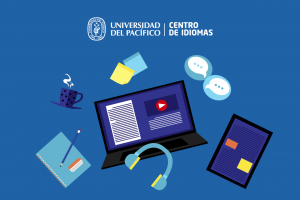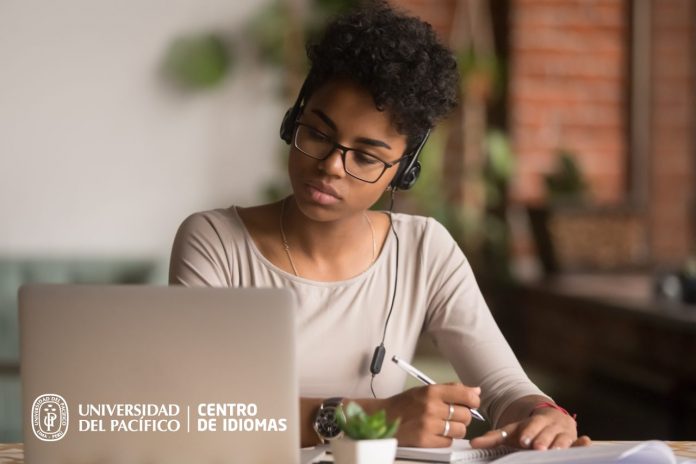This new way of living has taken us to a new way of teaching as well as to a novel way of learning for many. One of the most important aspects we need to consider is that we do not teach in just one classroom anymore. Nowadays, we have as many classrooms as students we have. Each place where a student is has become a new classroom with its own features. It is essential that we understand this new context because we need to consider those environments as the ones that can help or not to our pupils´ learning. We as teachers can also help our students to make fullest use of their resources. In that sense, we need to make sure they can not only be there in the virtual class when the time comes but also have the chance to practise or do anything they need in order to learn and improve the language they are learning.
Some aspects to be considered:
Since coronavirus has forced schools and language schools to provide remote learning, many of us have had to be more creative than ever, especially in the cases in which we have a lot of restrictions such as the ones related to internet connection or digital devices. Unfortunately, there are many who will still face massive disadvantages since they do not have access to internet.
On the other hand, for the ones who at least have a smartphone, we also need to make sure that whatever we share with them do not need many GB so that they do not have problems when trying to use the material provided. The features of the devices students have vary according to the model and plan students pay for the service.
Another important factor we need to contemplate is the way we teach in this new context. Something we need to make sure is to not overload students with contents that even though they could be very useful they become useless because students do not know how to work with them. Regarding the development of our students´ listening skills, for instance, it is essential that we do not overlook the process that listening implies in the course of communication (1). Providing links, websites, exercises etc is necessary to add variety to their experience with the language being learned; however, if our pupils do not know how to use them and take advantage of their features, those well selected materials will be wasted.
It is very common to find ourselves trying to help our students but we just do not know what else to do. What might be happening is that we are not probably taking into account the differences between English and the students´ native language. A student may not be able to decode a phoneme that exists in the target language but not in his mother tongue. In the process that begins when a person says something and the message is understood by the listener, the first step, after hearing, is to decode phonemes. Only after processing the acoustic signals, the recognized phonemes become words, then phrases, and finally its meaning according to the context of the sentence. For instance, you have your student listen:
The thing is that the sin is unforgivable.
What would your student listen?
Probably something similar to: /da sin is dat da sin is ʌnfɚˈgɪvəbəl/
You can play the audio a million times and students will probably continue listening to the same information impeding their understanding. In order to help them decode the sounds /ˈðə//ˈθɪŋ/ /ˈɪz//ˈðæt//ˈðə//ˈsɪn/ /ˈɪz/ /ʌnfɚˈgɪvəbəl/, it will be necessary that they know them. Any of these new sound won´t exist in their scheme unless we present them, teach them and have them practise with their pronunciation. Nobody can recognize anything they do not know exists. (2)
Once we consider these aspects when teaching how to improve their listening, we will be able to use any source suggested.

What means can we use if students do not have internet access?
One important situation we need to consider is that in order that our students be exposed to the target language is that they need to listen to different sources and become acquainted with pronunciation, intonation rhythm and so on. The cheapest way is to send whatever they need through WhatsApp which is used around the world and it doesn´t require many GB. You can send audios and do copy paste of the questions you want them to answer. You can also have them send back their recordings and have them in that way practise their speaking and pronunciation. Whenever possible you can send them short videos of yourself showing how to place the lips, for instance, to pronounce the sounds that need to be practiced. Another way could be through Facebook or Google. In case, you need to send emails, do so but use plain text instead of attachments. Plain text is easier to access and requires less data; therefore, less money.
Consider preparing more analogue activities to reduce technology. For example, try to evoke their previous knowledge before sending any listening material. Have them answer to some questions previously and with that input, you can decide how much information you have to send them before having them listen to the audio you want them to work with. You can reserve the real-time sessions just for the most important part which may be the presentation of new sounds and the last stage of a listening exercise, the speaking exercise. Making questions along the exercise is essential. Make them before having your students listen, then while, and definitely after. While listening questions are usually missed. They are important to maintain students’ attention and that forces them to respond rather than just remember the information by the time the audio is over as if the exercise were a test. Divide the audio material in parts and for example ask students to answer question #1 when the recording is in 1:05 minute. Then answer question #2 when it is in 2:00 minute and so on. Allow students to utilize the audio material as much as possible. This interaction with the audio material will enable them to constantly be alert and thus make sure they will succeed.
If there is a chance to use other means with your students or that you yourself can have access to internet, you can explore these apps:
Busuu, Elllo.org, English Listening and Speaking. EnglishListening.com, English Listening Practice – World Talks, LearnEnglish Podcasts, Learn to Speak English, Listen Pal, Speak English Fluently, and Tandem.
There are many; start just with one, explore it and check what you can record and send it to your students or share the site with them but have them interact with the material presented by always preparing questions to monitor their understanding and to make sure they utilize it the most.
In case, your students have the chance to download audio material, you can use any cloud file sharing services such as Google Drive, Amazon WorkDocs, Apple iCloud Drive, Box, Dropbox, Egnyte, Filecloud, Nextcloud, OpenText Hightail, Comparison Chart and so on. One I like a lot is Box because you can share anything and the students do not need to have an email account, they just have to register and it is free. Students do not even need to download the audio material, they just listen to it, do the exercise and send you the answers to the questions sent.
Once more, I invite you to explore any of these systems and you´ll see that there are many things we can do even if we have some restrictions.
Keep in mind the process that occurs when listening and the features of the target language students must know.
References:
Vila A., Flor de María
(1) The Myths About teaching Listening
(2) Listening a skill difficult to teach
https://blogidiomas.up.edu.pe/2018/07/listening-a-skill-difficult-to-teach/











Thank you so much. This is so useful and givs us the sources to share with our students who really have a tough time when doing some listening.
Thanks Consuelo for the feedback. It is true that listening skills are difficult to develop, but with the right guidance students improve faster. Keep following us!
Thanks. The information is really useful. I definitely give my students new activities next semester.
Thanks Verónica for your comment. I´m sure your students will benefit from the activities you will propose.
Comments are closed.